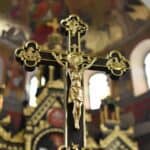Mount Sinai, located in the Sinai Peninsula of Egypt, is one of the most iconic and historically significant locations in the world. Famous for its religious significance, it is home to the world-renowned St. Catherine’s Monastery, a UNESCO World Heritage site. This sacred mountain and the monastery have attracted pilgrims, historians, and tourists for centuries, offering a unique blend of spirituality, history, and natural beauty. In this article, we will explore the history of Mount Sinai, the importance of St. Catherine’s Monastery, and why it remains a must-visit destination for anyone interested in religious tourism, culture, and history.
Mount Sinai: A Sacred Mountain
Mount Sinai stands at 2,285 meters (7,497 feet) above sea level, dominating the landscape of the Sinai Peninsula. The mountain has immense religious significance, especially in Judaism, Christianity, and Islam. In the Bible, it is believed to be the place where Moses received the Ten Commandments from God, making it a pivotal location for many religious traditions.
According to the biblical account, after leading the Israelites out of Egypt, Moses ascended Mount Sinai to commune with God, where he received the divine laws that would guide the people of Israel. This event is known as the Revelation at Sinai and remains one of the foundational moments in the Abrahamic faiths. The mountain is also referred to as “Jebel Musa” (Mount Moses) by Muslims, who regard it as a place of immense spiritual importance.
The natural beauty of Mount Sinai is another reason why it draws so many visitors. The rugged, awe-inspiring landscape offers breathtaking views of the surrounding desert and the Gulf of Aqaba. Visitors can hike to the summit of Mount Sinai, an experience that many find both physically challenging and spiritually uplifting. The hike takes about 2-3 hours, depending on the route, and offers a chance to reflect and experience the environment that Moses once traversed.
St. Catherine’s Monastery: A Historical and Religious Sanctuary
At the foot of Mount Sinai lies the magnificent St. Catherine’s Monastery, one of the oldest continuously inhabited monasteries in the world. The monastery was established in the 6th century by the Byzantine Emperor Justinian I, who commissioned its construction to protect the site from the Bedouin raids that were common in the region. The monastery is dedicated to St. Catherine of Alexandria, a Christian martyr who was martyred in the early 4th century. According to tradition, her body was discovered on Mount Sinai and brought to the site, making it a pilgrimage destination for Christians.
St. Catherine’s Monastery is renowned for its stunning architecture, which combines elements of Byzantine, early Christian, and Islamic styles. The monastery complex includes a church, a library, a museum, and a tower, all enclosed within high stone walls. The church is famous for its beautiful mosaics and icons, which depict scenes from the Bible and the lives of the saints. One of the most notable features of the church is the Burning Bush, an ancient bush believed to be the one that God spoke to Moses from, as described in the Book of Exodus.
The library at St. Catherine’s Monastery is one of the most important collections of ancient Christian manuscripts in the world. It houses over 3,000 manuscripts, many of which date back to the early centuries of Christianity. The library contains works in Greek, Arabic, Syriac, and other languages, providing a valuable insight into the religious and cultural history of the region.
Why Visit Mount Sinai and St. Catherine’s Monastery?
- Religious Significance: For Christians, Jews, and Muslims, visiting Mount Sinai and St. Catherine’s Monastery is a profound spiritual experience. The mountain is a sacred site that connects visitors to the ancient past and the divine revelations that took place there. Whether for religious pilgrimage or personal reflection, the site offers an opportunity for spiritual growth and understanding.
- Historical and Cultural Importance: St. Catherine’s Monastery is not only a religious site but also a treasure trove of history and culture. The monastery’s rich collection of manuscripts, icons, and artifacts makes it an essential stop for those interested in the early history of Christianity and its spread in the Middle East. The blending of Byzantine, early Christian, and Islamic influences in the architecture adds to the site’s historical significance.
- Natural Beauty: The dramatic landscapes surrounding Mount Sinai make it an excellent destination for nature lovers. Hiking to the summit offers a unique opportunity to experience the rugged beauty of the Sinai Desert, with stunning views of the surrounding mountains and the distant sea. The sunrise from the summit is a particularly magical moment, as the first light of day illuminates the vast desert below.
- Adventure and Hiking: For adventure enthusiasts, the hike up Mount Sinai is a rewarding experience. There are two main routes to the summit: the Camel Path (Siket al-Basha) and the Steps of Repentance (Siket al-Tawba). Both routes offer their own challenges, but the reward at the top is a panoramic view that stretches for miles across the desert and mountains.
- Accessibility and Nearby Attractions: Mount Sinai and St. Catherine’s Monastery are easily accessible from major cities in Egypt, such as Cairo and Sharm El Sheikh. The area is also close to other popular tourist destinations, such as the Red Sea resorts and the ancient city of Petra in Jordan.
Conclusion
Mount Sinai and St. Catherine’s Monastery are more than just a tourist destination; they are places of profound spiritual significance, rich history, and natural beauty. Whether you are visiting for religious reasons, cultural exploration, or simply to enjoy the breathtaking landscapes, this sacred site in Egypt offers something for everyone. The opportunity to walk in the footsteps of Moses, to experience the serene beauty of the desert, and to explore the historical treasures of St. Catherine’s Monastery makes Mount Sinai a unique and unforgettable destination.




